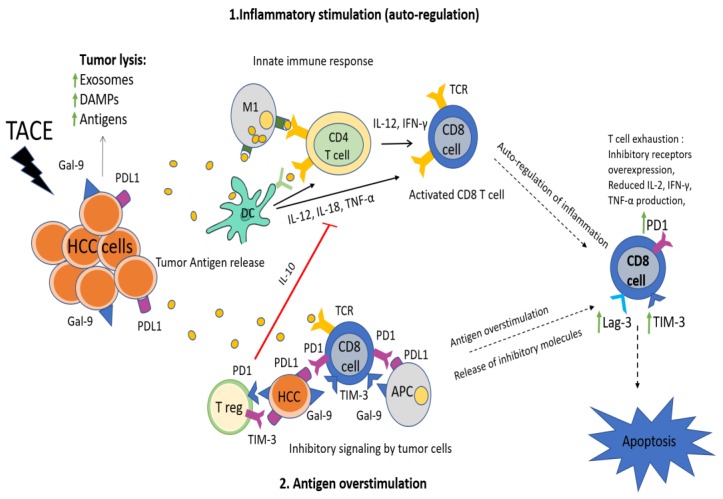Figure 5.
The “2-hit” hypothesis: (1) excessive inflammation induced by tumor lysis following TACE is autoregulated and self-restricted by expression of co-inhibitory receptors (TIM-3, PD-1, Lag-3) on T cells, (2) T-cell overstimulation by tumor-related antigens and inhibitory signaling by released tumor cells leads to T-cell exhaustion defined by poor effector function and expression of co-inhibitory receptors such as PD-1 and TIM-3, upregulation of T reg cells and reduced inflammatory cytokine production. Both pathophysiological mechanisms result in increased TIM-3 expression on the surface of CD8+ T cells and eventual depletion of the anti-tumor immune response. HCC; hepatocellular carcinoma, TACE; transarterial chemoembolization, NK; natural killer, APCs; antigen presenting cells, TIM-3; T cell immunoglobulin and mucin domain-3, Lag-3;Lymphocyte-activation gene-3, PD-1; programmed death 1, PD-L1; programmed death 1 ligand, IL; interleukin, IFN-γ; interferon-γ, TNF-α; tumor necrosis factor-alpha, T reg; t regulatory, DC; dendritic cells, M1; macrophage, DAMPs; damage-associated molecular patterns.

